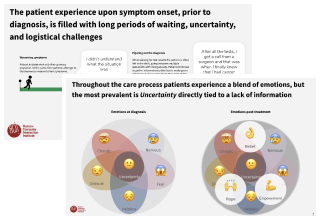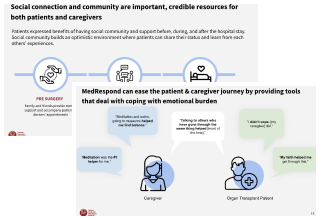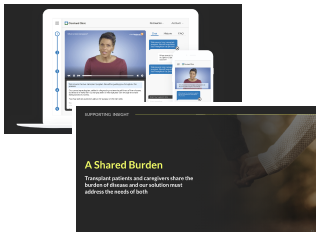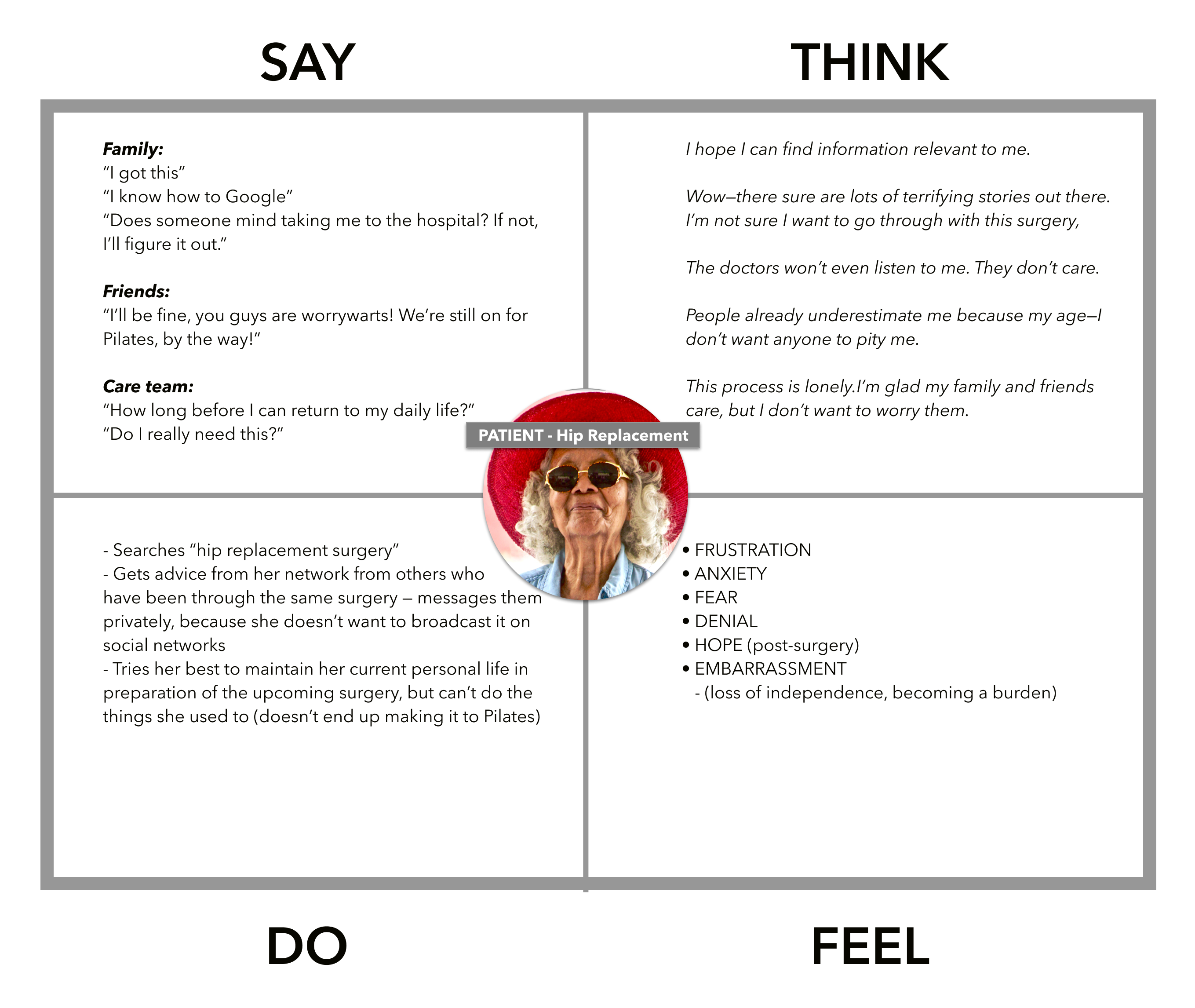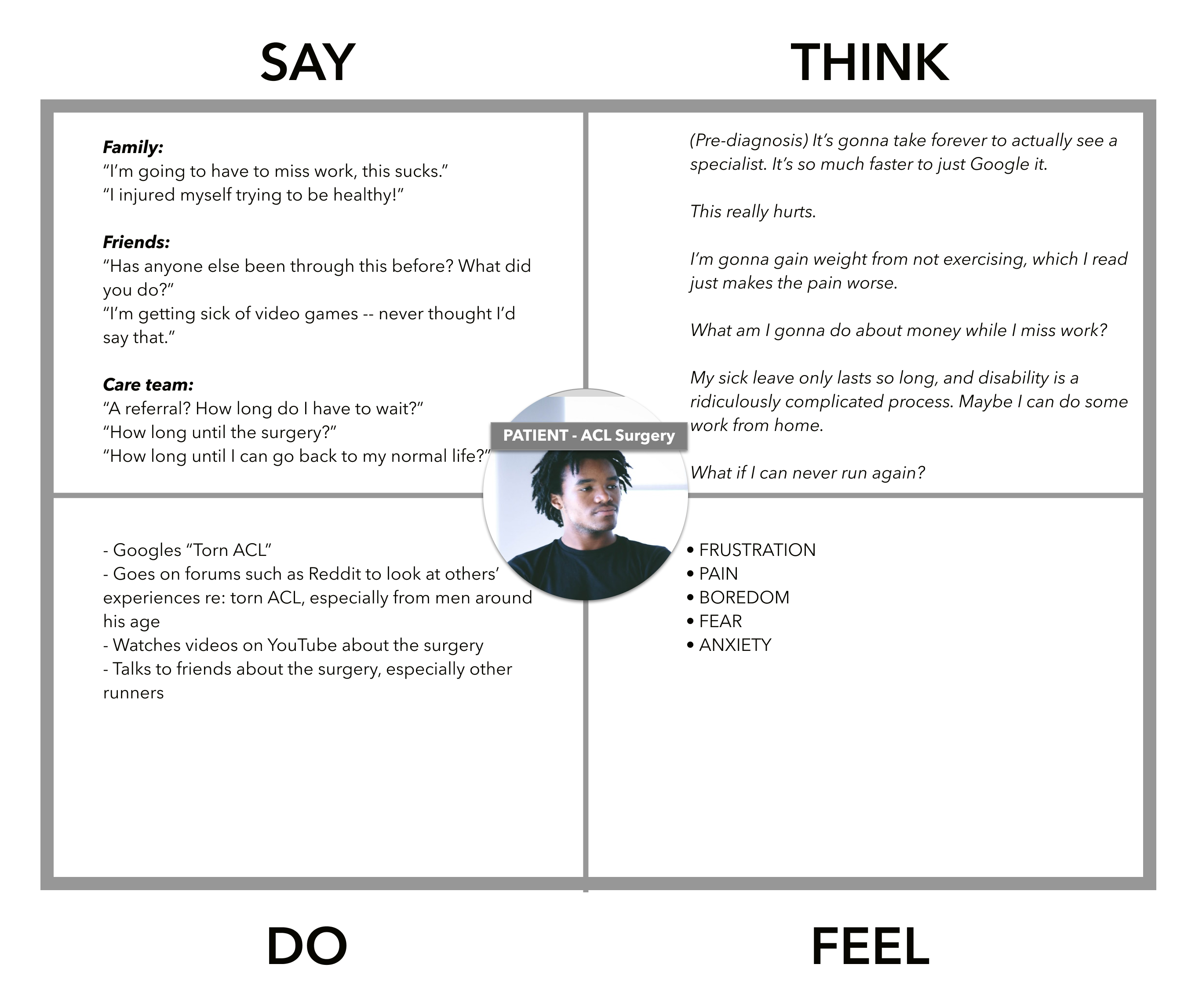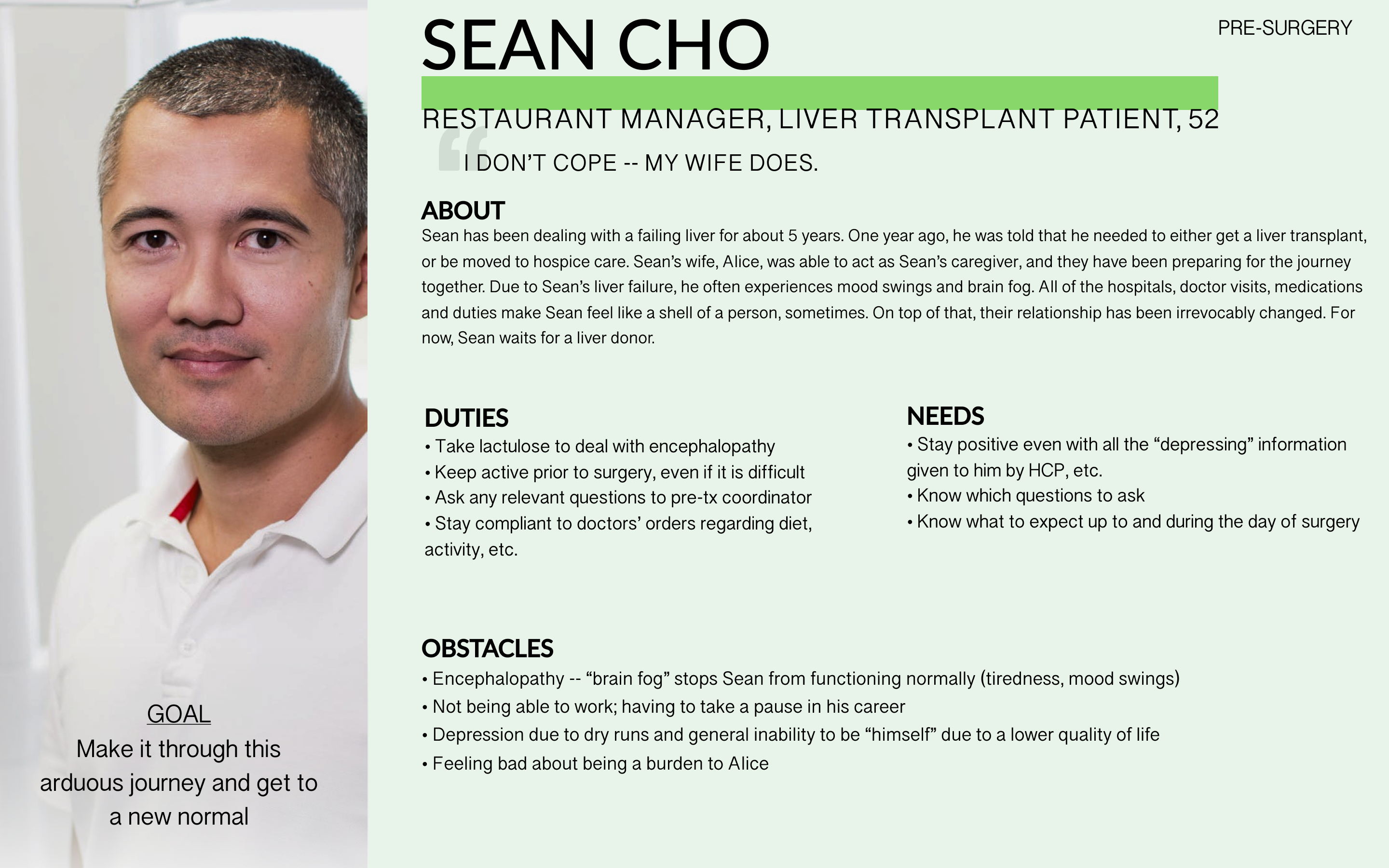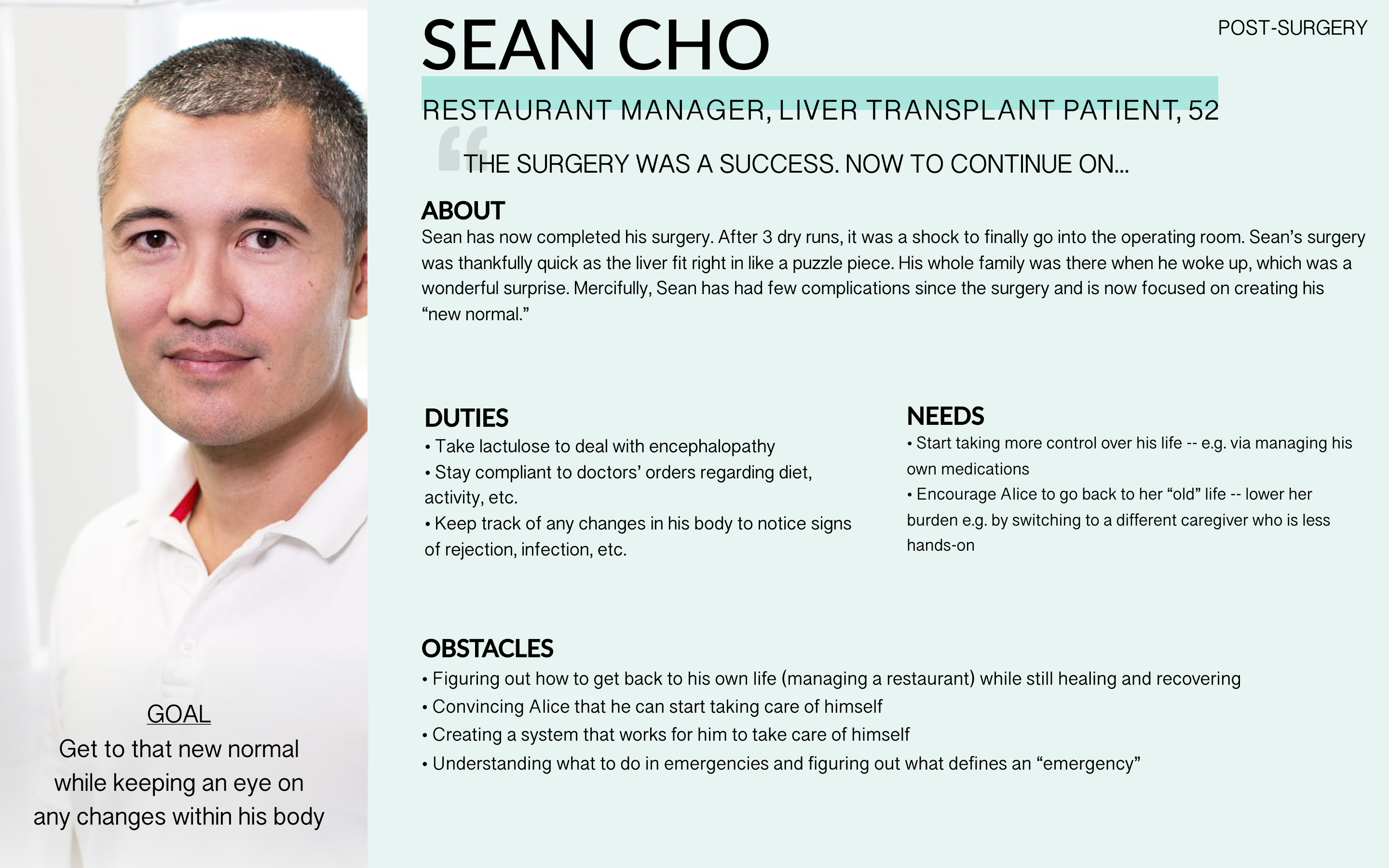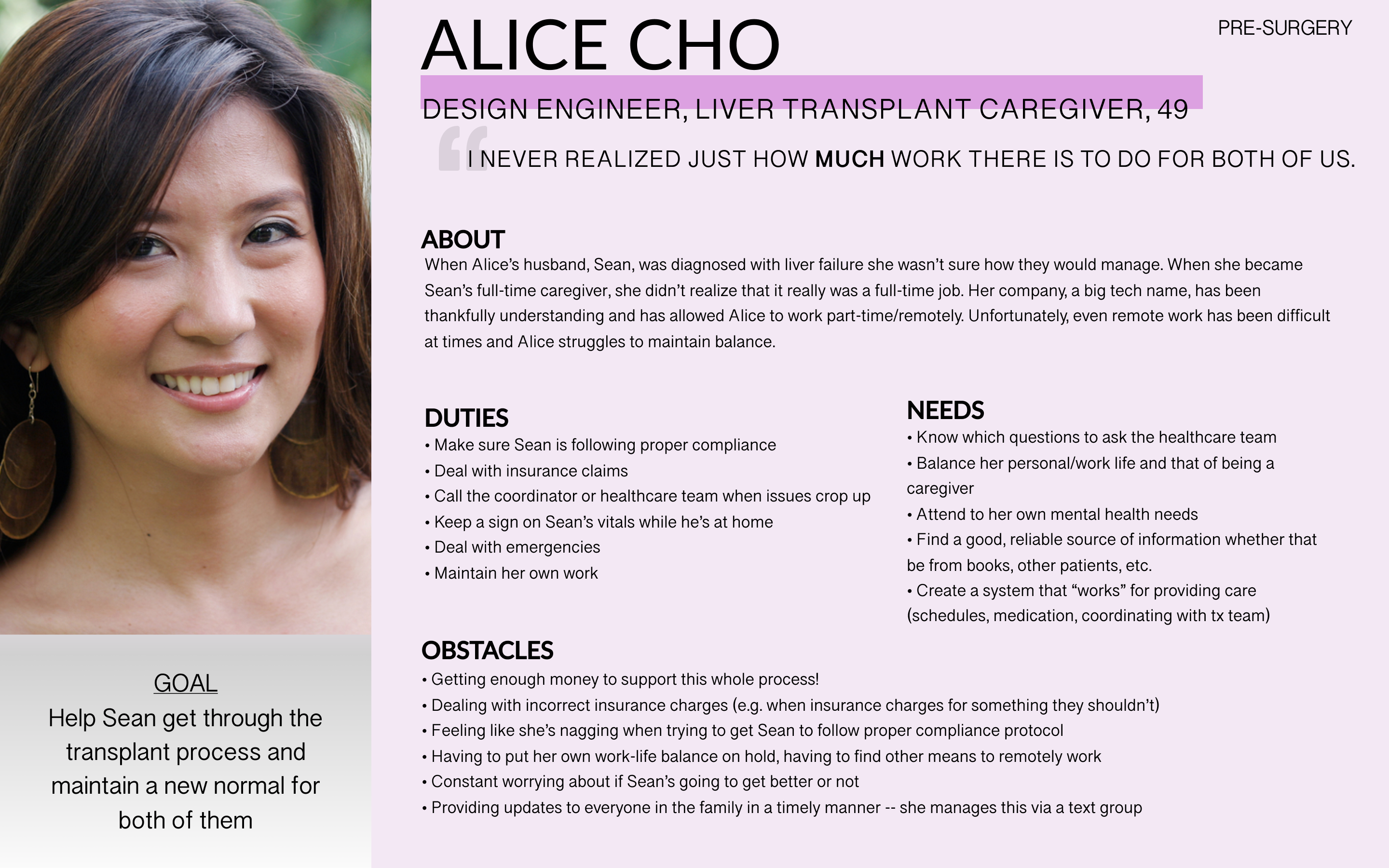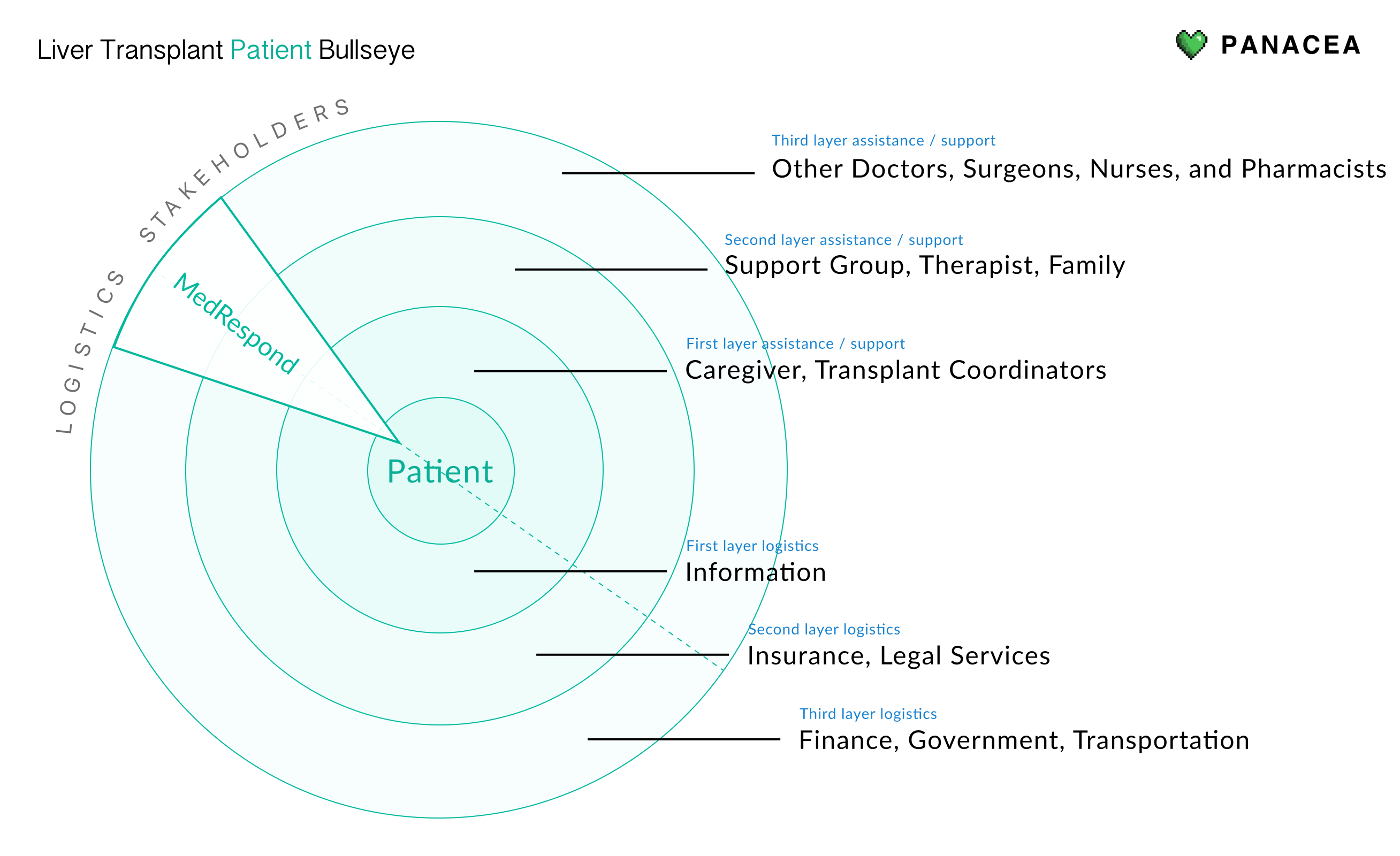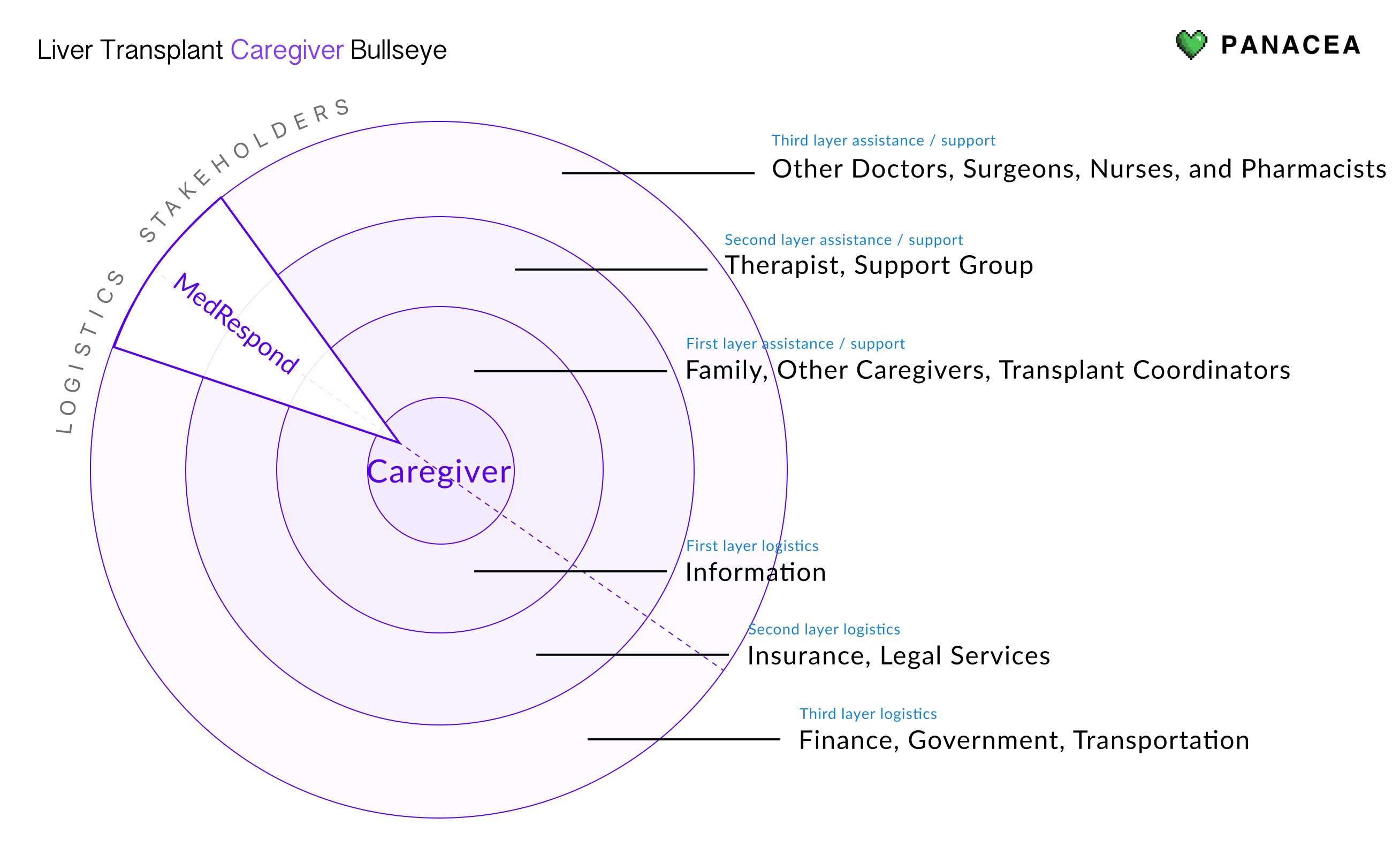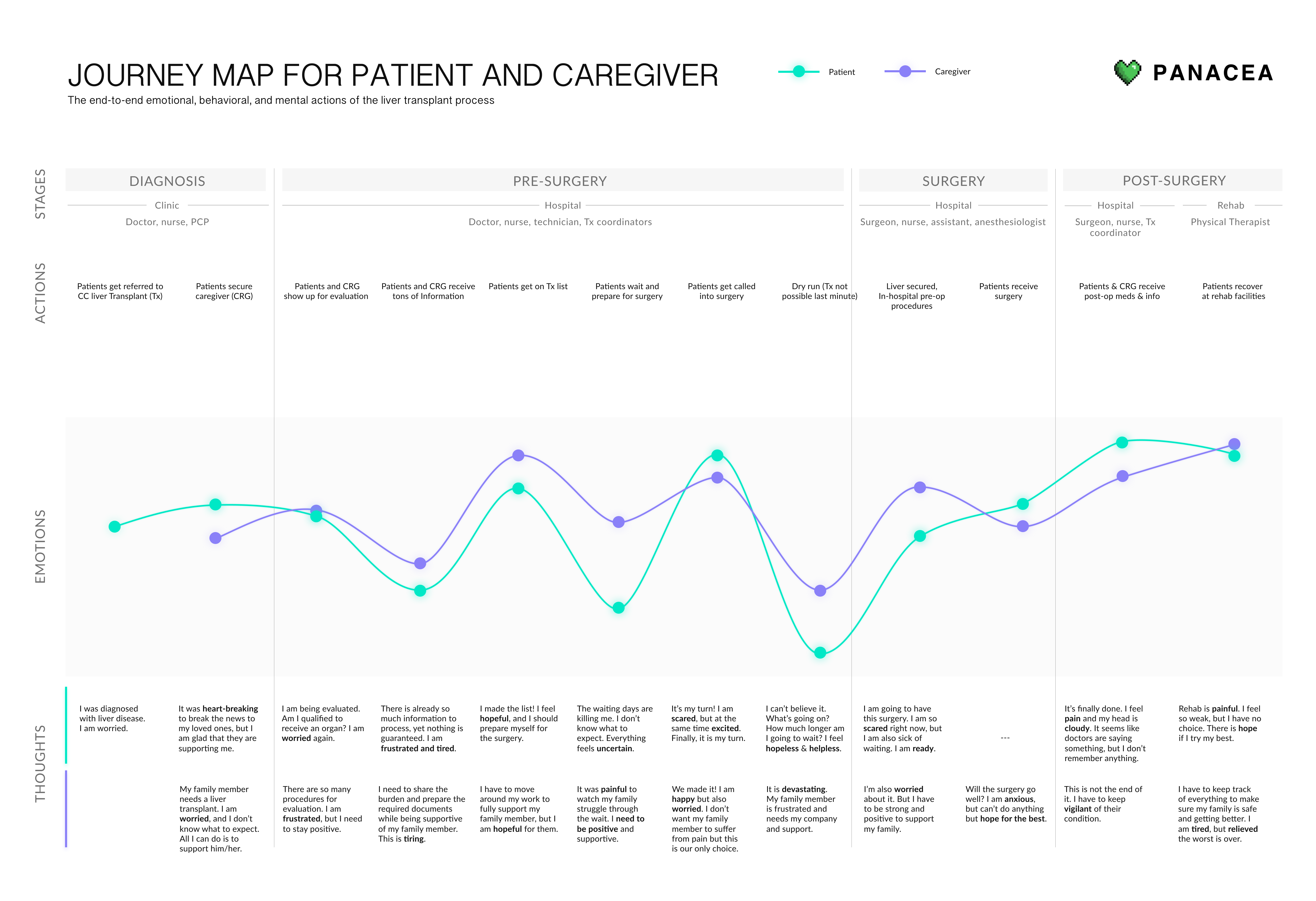In this 8-month-long capstone project, we worked with MedRespond, an online healthcare communications company that combines artificial intelligence, search and streaming media to deliver interactive, personalized communication solutions to patients and clients.
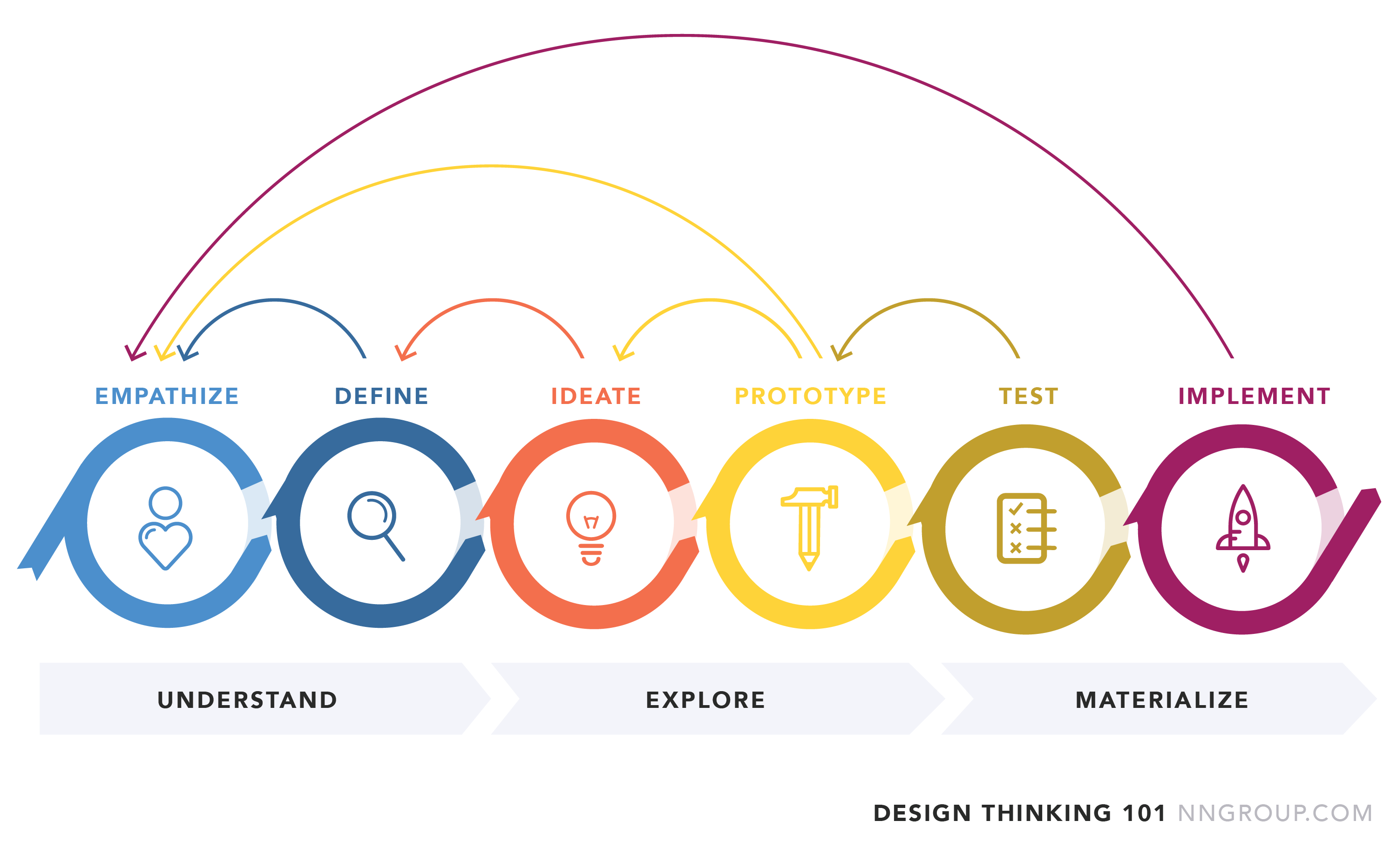
During the course of 8 months we engaged a total of 88 patients, caregivers, and subject matter experts through various research methodologies, including contextual inquiry, semi-structured interviews, and think-alouds. Doing so allowed us to deepen our understanding of the problem space, define key pain points and opportunities, validate concepts, and test and refine a product that constantly kept the user at the center.
During the first week of our project, after defining team and individual goals, roles, and how we wanted to work together as a team, we dived right into the problem space with background research. Our goal was to get as rich an understanding of our challenge as possible before our initial kick-off with our client and subsequent user research.
Preliminary design review of existing MedRespond platform, comparing each tool’s functionality to a list of vetted, expert usability principles and identifying potential usability issues.
Exploration of academic research on learning with videos, patient engagement, benefits of patient socialization and the use of affective design and other future design directions.
Initial review of existing online patient engagement websites, comparing them with MedRespond for different features, capabilities, and usage of tools such as AI and media streaming.
Analysis of user interactions from the Fit For Surgery platform log, examining user behavior and detecting quantitative patterns in the way patients use the tool to learn about their condition.




Throughout the course of four months, and in conjunction with ideative design methodologies, we explored a variety of healthcare topics, including oncology, cardiology, surgery, and chronic pain -- key topics areas covered by past MedRespond programs. By the end of spring we had interviewing a total of 45 respondents and were exclusively focused on designing for the liver transplant program at Cleveland Clinic.
Conducting interviews with individuals who had had any type of surgery, later holding a targeted second round of interviews with individuals who had gone through the liver transplant process.
Exploration of academic research on learning with videos, patient engagement, benefits of patient socialization and the use of affective design and other future design directions.
Identifying common themes from user interviews with a week-long affinitizing session, allowing us to generate insights and develop greater understanding of the medical problem space.
Quickly putting new ideas to paper and performing initial needs validation by testing these ideas through speed dating with liver transplant patients and caregivers in the Cleveland Clinic.




Research is an iterative process for team Panacea. We generated and refined several research artifacts along the course of our generative research phase, such as research reports, personas, empathy maps, stakeholder diagrams (Panacea Bullseyes), customer journey maps, and service blueprints. These served as communication tools between us and our client, as well as documentation of key findings and considerations for our research-based design cycles.
